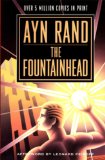Olivier Langlois's blog
Practical Statecharts in C/C++: Quantum Programming for Embedded Systems
07/11/07
Practical Statecharts in C/C++: Quantum Programming for Embedded Systems
First prior to reading this book, I was finding the title unattractive. I did not know what statecharts were and what Quantum programming was. By reading this book, I have learn that statecharts were special finite state machines that could be built by deriving them from more general FSM similar to how OO classes inheritance works.
Quantum is the name of the presented framework in the book. The title is misleading because I though that Quantum programming was some weird new programming technique that I was not aware and did not care to learn. I think that it is important to find catchy names to market software but one negative point of the book, is that the author spend way too much pages to describe similarities between quantum physics and his framework to justify the name 'Quantum' for his framework. Programmers are not all quantum physics enthusiasts!
Concerning the book content, the author presents the C++ classes implementing the statecharts framework and a set of classes to make threads driven by statecharts collaborate together by communicating with message queues. It is an interesting reading and there are many places where you can learn good programming tricks by seeing the author code. However, I am not sure that I would want to use the framework because it is complex. Let me clarify what I mean. It is not the framework that is complex but implementing statecharts is complex. I believe that the author made his code as simple as possible to implement statecharts. Personally, I still have to work on a problem where a simple FSM will not be enough.
The best feature of the book is its presentation of a base class to implement FSMs and compares it with traditional table based FSMs and a OO FSM like the one presented in the Design Pattern book and it is highly convincing that his FSM implementation is superior to the other 2 in size, performance and ease of maintenance. Another interesting topic is the author method to emulate C++ in C. You cannot beat the real thing with an emulation but when you have to go write C and you are used to do OO programming, this method might become handy.
I would say that for the FSM pattern and the C++ in C methodology alone, even if it represents a small proportion of pages in the book, it justifies the purchase of this book.
Comments, Pingbacks:
No Comments/Pingbacks for this post yet...
This post has 1 feedback awaiting moderation...
Comments are closed for this post.
Olivier Langlois's blog
I want you to find in this blog informations about C++ programming that I had a hard time to find in the first place on the web.
| Sun | Mon | Tue | Wed | Thu | Fri | Sat |
|---|---|---|---|---|---|---|
| << < | > >> | |||||
| 1 | 2 | 3 | 4 | 5 | 6 | |
| 7 | 8 | 9 | 10 | 11 | 12 | 13 |
| 14 | 15 | 16 | 17 | 18 | 19 | 20 |
| 21 | 22 | 23 | 24 | 25 | 26 | 27 |
| 28 | 29 | 30 | 31 | |||
Search

Categories
Olivier Langlois's blog
- AAC (2)
- Book reviews (12)
- C++ (24)
- Code Optimization (4)
- Compiler (3)
- Fractal (2)
- Linux/UNIX (3)
- Multithreading (3)
- Software security (7)
- TCP/IP (8)
- Web (1)
- Windows programming (19)
- C++ (28)
- tutorials (4)
- General (10)
- Hardware reviews (2)
- Linux (12)
- Recommended books (4)
- C++ (20)
- Code Optimization (2)
- Compiler (3)
- Fractal (2)
- Linux/UNIX (1)
- Multithreading (2)
- Rare out of print (3)
- Software security (5)
- TCP/IP (7)
- Windows programming (16)
- Software reviews (0)
- TCP/IP (8)
- Video games (4)
Archives
- January 2016 (1)
- September 2015 (1)
- July 2015 (1)
- June 2015 (1)
- May 2015 (1)
- December 2013 (3)
- September 2013 (1)
- May 2013 (8)
- April 2013 (1)
- December 2010 (1)
- August 2010 (1)
- June 2010 (1)
- More...
Misc
 XML Feeds
XML Feeds
What is RSS?
Who's Online?
- Guest Users: 1
 BOOKS i'm reading
BOOKS i'm reading




